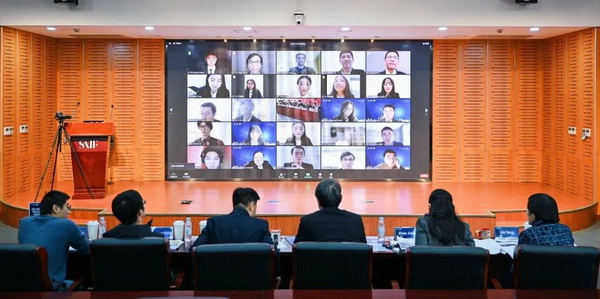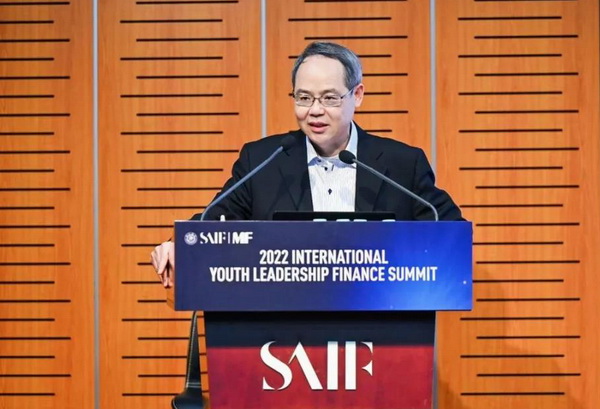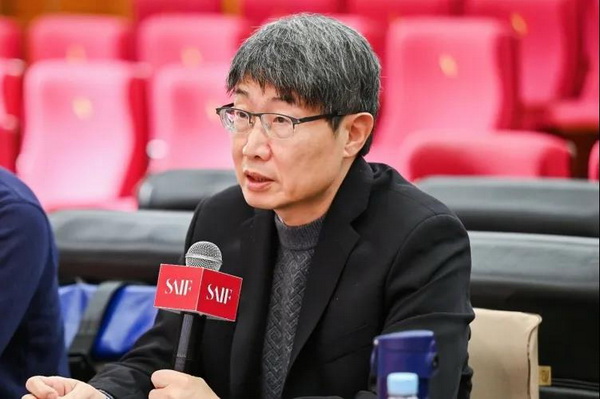Recently, the 2022 International Youth Leadership Finance Summit was hosted by the SAIF MF Program. More than 120 outstanding students from 24 top universities around the world gathered online to focus on ESG from the perspective of generation Z. Participating universities included: Tsinghua University, Peking University, Shanghai Jiao Tong University, Fudan University, Cornell University, London School of Economics and Political Science, University of Toronto, and the National University of Singapore, and many others.

At the opening ceremony, Professor Chun Chang (Executive Dean, Professor of Finance, Huifu Chair Professor at SAIF) delivered a welcome speech. He said that through this international platform, the youth of today can swiftly exchange ideas with industry leaders and mature rapidly.

The theme of this year's summit, "Exploring Solutions on ESG for a Better Future", attracted more than 1,000 applications from all over the world. Only 120 students were selected and they to re-form into teams in order to compete in the four-day live PK session and demonstrate their best solutions.
Combining their professional expertise and interests, the participating teams chose business case companies in a wide range of markets, including: materials, new energy, consumer goods, automotive, etc. They focused on 23 companies, such as Contemporary Amperex Technology Co. Limited (CATL, a Chinese new energy technology company), Deliveroo (a British takeaway platform), JBS (a Brazilian meat producer), and International Petroleum Investment Co. (IPIC). They used professional knowledge and creativity to design ESG solutions for these companies, and analyzed the feasibility of the solutions for academic and industry experts.
At the conclusion, Team Libru from Fudan University won first prize. They chose CATL as the business case company for their ESG solution and began their analysis from the perspective of the lithium battery cycle. Their perfect presentation and their calmness during the Q&A session won unanimous approval from the judges.
At the summit, Professor Guangshao Tu (Member of the National Committee of CPPCC, Adjunct Professor of SJTU, Executive Director of SAIF Board) was invited to deliver a keynote speech (virtually) on "ESG and Sustainable Development of Enterprises".

He pointed out that the trend of ESG investment was an important symbol of global economic and social development transformation. ESG practice and ESG investment were the two core parts of ESG development. Tu said that three major guiding mechanisms needed to be improved upon in order to promote ESG development, including: ESG practice for micro-entities at the government level, ESG investment in the real economy, and social capital by investment institutions. He also pointed out that ESG development needed: support of a theoretical system, institutional construction, main functions delineated, and an ecosystem. ESG investment can play five major facilitating roles in the sustainable development of enterprises, including: enhancing enterprise value, deepening capital function, optimizing asset structure, promoting enterprise governance, and improving disclosure quality.
In addition to the twenty-three teams that were strictly selected to enter the summit, more than one hundred public judges from universities around the world were also invited to observe and participate in the summit. This not only built a platform for students to absorb cutting-edge knowledge and to dialogue with academic experts and industry leaders, but also actively promoted peer-to-peer exchange and learning opportunities among students from diverse backgrounds.
During the Q&A session after the keynote speech, Qingyang Wang, a public judge from Nanjing University, asked Professor Guangshao Tu how a new energy supply could keep up with traditional energy based upon the goal of carbon neutrality, and whether it would lead to a deficiency in energy supply. She said that, through Professor Tu's speech and answers, she now deeply understood the logic behind management and control of carbon emissions (instead of just limiting energy consumption) in the practice of ESG.







